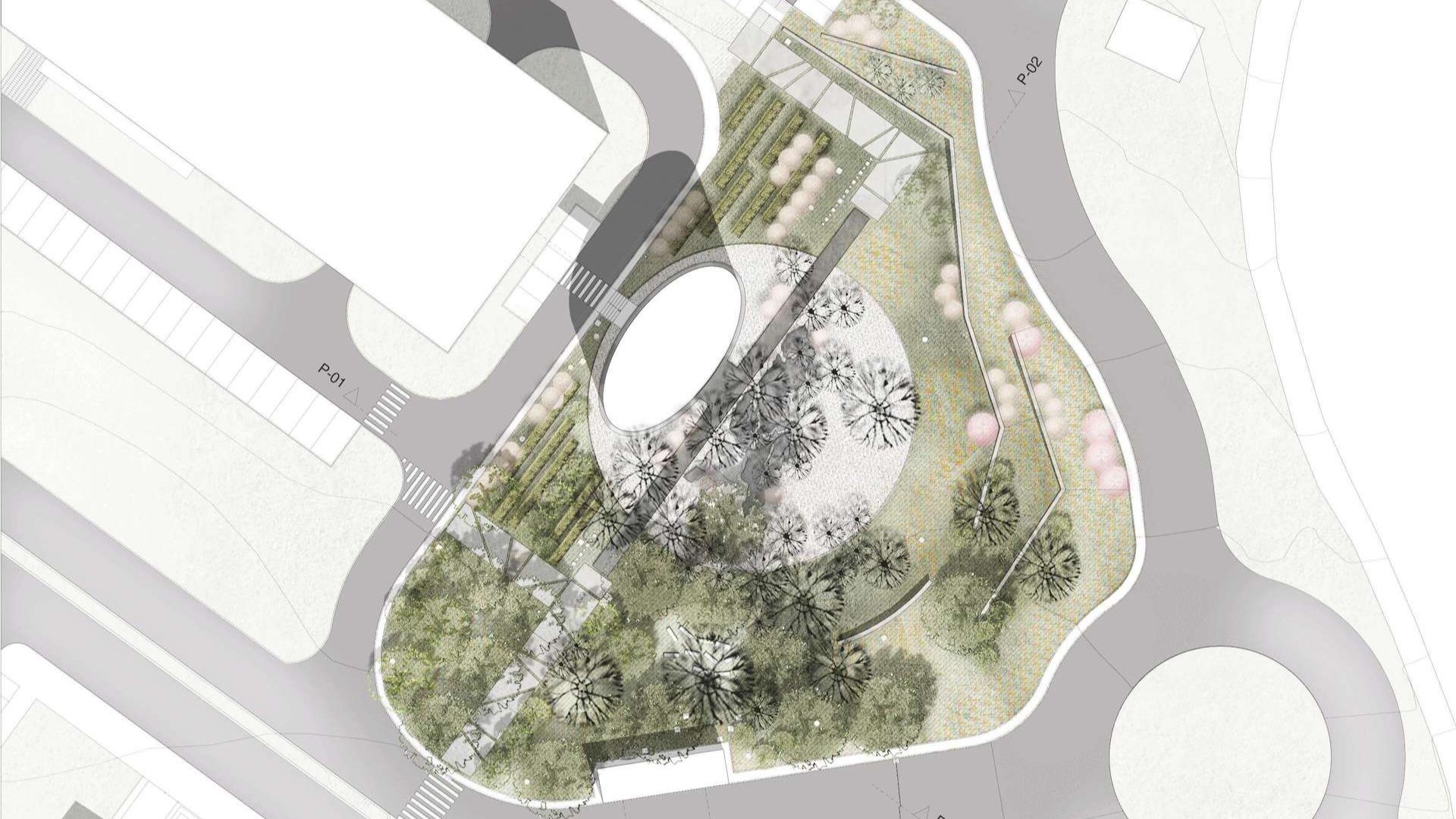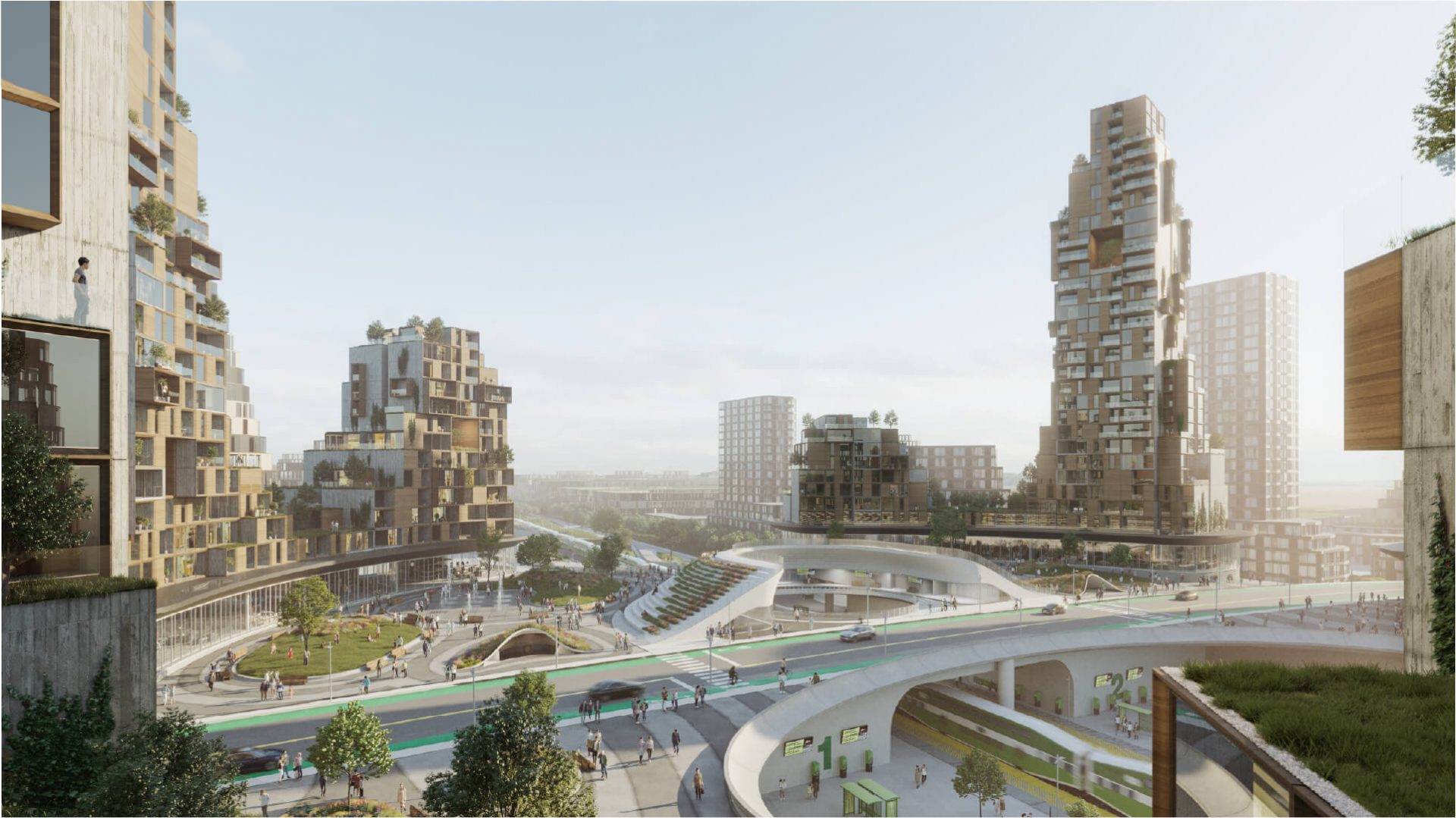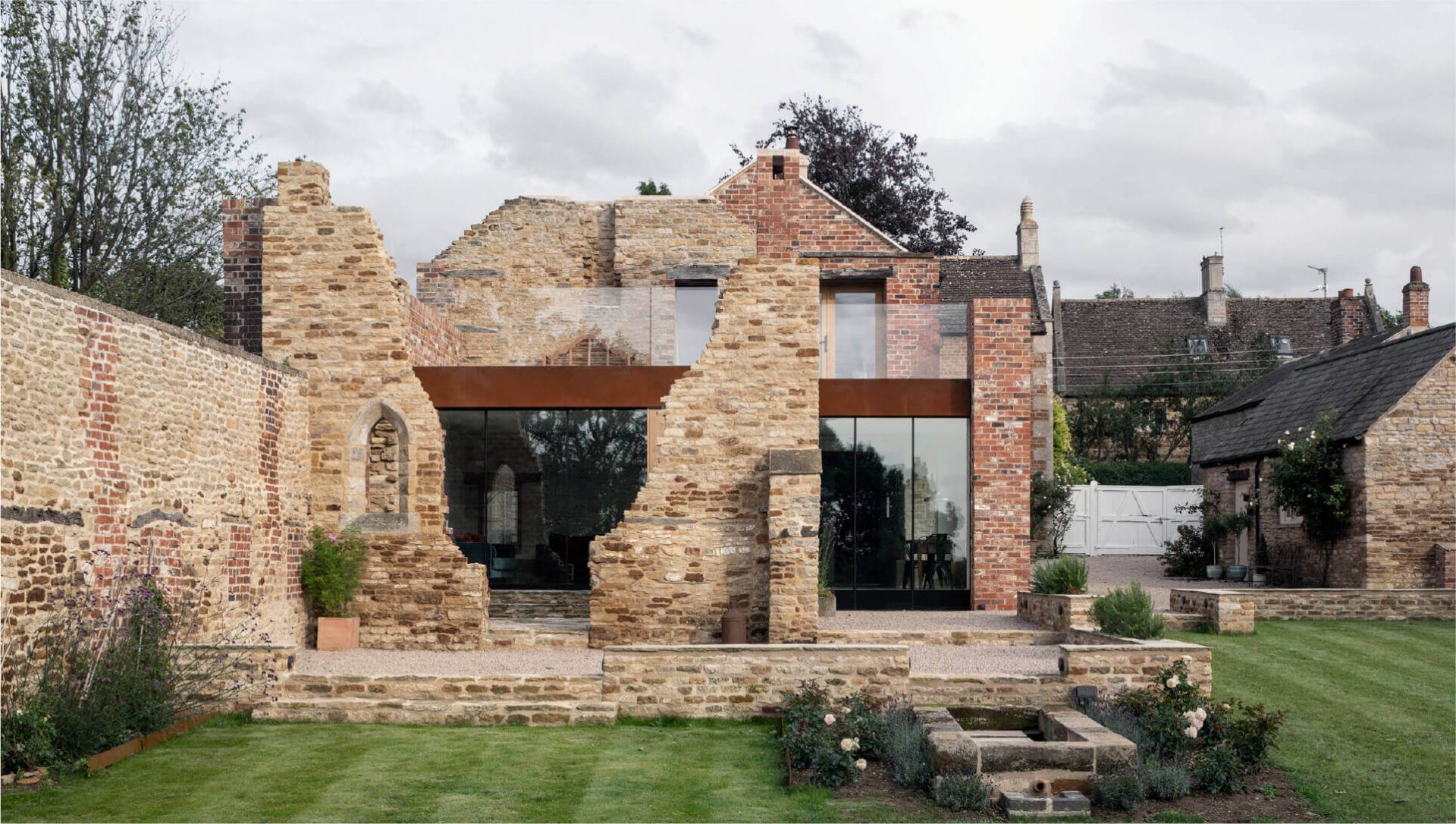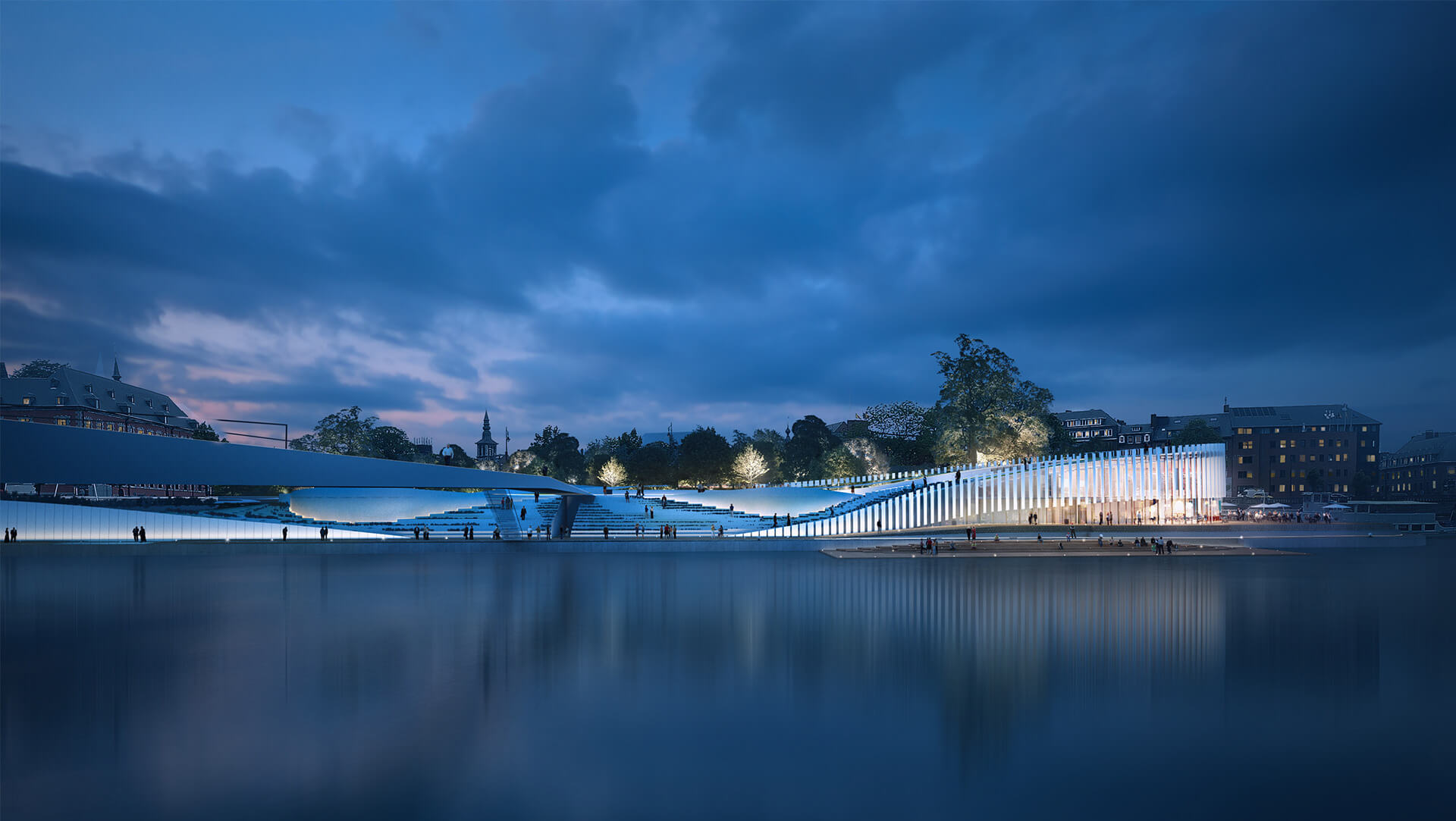STILL urban design: bioclimatic interventions for sustainable cities
Portuguese studio STILL urban design, creates more comfortable urban environments through their bioclimatic intervention and rehabilitation of outdoor spaces.

With the current need to make our cities more sustainable, designers are changing their mindsets, experimenting with different materials and techniques, and overall finding better design approaches to create better environments. When it comes to urban design, sustainability is especially important. With our cities developing densely in conjunction with the use of inappropriate external materials, the lack of green areas, and the increased human-related thermal energy emissions, our environmental temperatures are at an all-time high and proper interventions are needed.
Lucky for us, design studios like STILL urban design are focusing on the rehabilitation of our urban areas and creating expressive and aesthetically harmonic spaces that benefit our way of life, create optimal conditions, and achieve a sustainable environment.
Based in Porto, Portugal, and founded by Sofia Pera and João Cortesão, STILL urban design studio centers on the bioclimatic rehabilitation of public, collective, and private outdoor spaces. Their work takes climate as the main design parameter and achieves interventions that foster thermal comfort while reviving and creating holistic design solutions.
The incorporation of bioclimatic design in their projects mediates the relationship between man, climate, and environment, and with it, STILL urban design achieves better conditions for thermal comfort creating outdoor urban spaces that are more attractive for people all year round. Their design approach not only conceives comfortable environments but also sustainable solutions that reduce CO2 emissions and energy consumption in urban areas.
Fascinated with their bioclimatic design approach, DesignWanted interviewed architect and urbanist Sofia Pera to find out more about their work, bioclimatic urbanism, and architecture, and what challenges do they face when rehabilitating outdoor spaces.
Who are Sofia Pera and João Cortesão? How did the journey for STILL Urban Design begin?
Sofia Pera:
“I think it’s interesting to explain how it started. Even though Joao is not part of the company anymore, we are actually good friends. We are both Architects and Urbanists and we met in 2008 at an international conference because we are both members of ISOCARP which is the International Society for Urban and City Planners. Although we are both Portuguese we hadn’t met each other because I was living in the Netherlands and he was living in Portugal, he was doing his Ph.D. in Bioclimatic urban design and I was working in the Netherlands as an urban planner.
As you know, Dutch people are really into sustainability and dealing with water issues, building cities from scratch, and adapting their cities to climate change constantly. Basically this is how it began and we just didn’t know it at the time, we would always say we should do something together. I still lived in the Netherlands for a few years, then I moved to Barcelona to do my second master in Urbanism.
I got to the point where it was getting a little complicated to find a job in Barcelona with my kind of expertise in urban design focused on sustainability, this might sound strange but indeed it is a difficult area. By that time Joao had opened his office in Portugal and something just felt right so I moved from Barcelona to Porto and then decided to join forces to begin STILL urban design.”

About STILL Urban Design, what moved you to focus on bioclimatic design?
Sofia Pera:
“It is explained a bit with what I said before, by my side it was about my professional experience working in a country that really cares about sustainability and urbanism and somehow there is the understanding that it is not possible to talk about urbanism without talking about bioclimatic design and it is somehow implicit that one thing without the other doesn’t really work.
In the case of Joao, he was focused on this subject in his PhD, this is how we joined forces with my side on the practice field and his side on the academics. We also decided to focus on this because as a Mediterranean country, we feel that climate change is affecting us enormously and not only us but also in most of the world.
Of course we had to find our focus somewhere. There was a huge tradition I think since the 80s and 90s to clean the public space, when we say ‘clean’ we mean making them more septic in a way, more paved and taking out vegetation because everybody has this idea that vegetation needs a lot of maintenance and creates all this dirt and you have to clean it up.
Now we are getting to the point that if you want to sit in a public space there are no shaded places because there are no trees; there is no appropriate design for it and this is the purpose we serve with our practice. We incorporate bioclimatic design in order to make outdoor spaces more attractive due to better conditions for thermal comfort. We are concerned with attracting and retaining people all-year-round by attenuating climate extremes, we use climate as a design parameter, our interventions intend to create thermal comfort and balanced spaces.
Maybe the question is what do bioclimatic strategies mean? Bioclimatic urbanism and architecture refer to the design of spaces either interior or exterior based on local climates and of course, this all has to do with mitigating the gradual growth of temperature extremes, peaks of extreme cold or hot brought by climate change. We also understand that this increases people’s health vulnerability and reduces the conditions offered for thermal comfort, therefore, makes the use of public spaces more difficult.
The environmental quality of urban spaces, and the potential of urban microclimates to improve the environmental performance of surrounding buildings depends on their design and detail, so things like street geometry, building form, orientation, finishing, landscaping, materials, still influence the environmental quality of our cities and despite all the efforts in integrating sustainable mobility systems and use of renewable energies, we really need to think about all of it.
Bioclimatic design focuses on finding the best mediation possible between men, the environment, and the climate. The integration of simple elements like water and vegetation has been used for decades for cooling and providing shade in outdoor spaces, basically, we focus on this because we want people to rethink and also, people in power should be able to understand that regenerating and rehabilitating compact urban areas according to this philosophy is a vital step towards sustainable cities.”

Focusing on bioclimatic design and rehabilitation of outdoor spaces is not an easy task. What are the biggest challenges you have found during the design process?
Sofia Pera:
“Thinking of what I said before, there is a huge tradition of public space use and we somehow accommodate to what we have; from one side we always claim that what we have doesn’t work, but on the other side we really like things the way they are, especially us as Portuguese people.
To be honest, the biggest challenge for me was to come back to my home country after 10 years of living abroad and especially not having any experience working here. I came with a different mindset, the northern one, even though I did my second masters in Barcelona and Venice.
I had already had the opportunity to work with great people in my professional experience, but it was different because we focused on scenarios that implied climate change, urban design, and urban planning. My major problem here was convincing people that there’s a need for change and time is needed to see those changes happening. Sometimes people are just not patient enough to see things evolve. If you want things to happen you need to let them grow, for example, if you design a public space with trees you won’t see the trees at their ‘full potential’ immediately, they will take 20-30 years to grow.
When I arrived in Portugal in 2015, the trend in architecture was ephemeral interventions, so to get the attention of people we proposed several interventions and did 4 ephemeral interventions. It was really nice to see people’s reactions and stop by and really understand the purpose of it. The street, square, or space they walked by every day was looking so much nicer with simple interventions, with shading or sun in the winter.
Basically, this is what it is, designing a public space based on climate thinking on the needs of all the people, for example, thinking about an old person, with aging people tend to get ‘colder’, and when you design you have to think about it all: sunny areas for warmth, shaded ones, the wind or light reflections.”

For ‘The Tower’ architectural installation, you collaborated with the artist Miguel Seabra. If you had the chance to collaborate with any other artist, designer, or architect, who would it be?
Sofia Pera:
“It was very easy to collaborate with Miguel for various reasons, the most obvious is because he is my partner, and the not so obvious reasons come with experience in practice and the fact that we share our life and studio.
Miguel is a sculptor although in the latest years he dedicated himself more to video performances and photography. He is very connected to philosophy, especially to philosophers like Nietzche. ‘The Tower’ creation was new for him because it was his first object in a landscape and it was really nice.
To be honest I collaborated already with other architects because I am part of a collective called ‘Hodos’, we do landscape projects inspired by walking in the landscape, for example from pilgrimage routes in Mexico and great Mexican architects like Tatiana Bilbao, and also inspired by the Norwegian scenic routes that basically have many architectural and artistic interventions in the landscape. Actually the tower is part of a set of 10 other interventions where artists and architects collaborated so I had the chance to collaborate with several architects, but as an artist, I think the first one was Miguel.
And if I had the chance to collaborate with another artist I think it would be with Didier Fiuza Faustino which is actually a Portuguese-French artist; I haven’t put much thought into it so I don’t know what I would like to work on with him but one of the things I like the most about his practice is the almost imaginary architecture, as he designs whatever he feels like which I think is so cool and such a privilege.
Most of us don’t have the chance to do that because even though we work on the things that we love, we have clients to answer to. Maybe this is why I would like to collaborate with someone that has the time and ‘madness’ to do a crazy architectural experiment.”

STILL Urban Design interventions create thermal comfort spaces contributing to the energy sufficiency of buildings. What are the main trends & future directions within bioclimatic design and what do you think of them?
Sofia Pera:
“I don’t really think there is a trend in bioclimatic design because it is something that has always been present since the beginning of time, for example, cross ventilation, you can put two windows on opposite sides of a room and if you’re hot you open the windows, this is bioclimatic design. Somehow it sounds like a “big word” like sustainability that is so vast, but bioclimatic design is just as simple as working with climate.
I think the future direction would be something like Philippe Rahm work where somehow he makes visible thermal architectures. It is very interesting because in his drawings, he actually shows with colour and graphics the thermal radiation or climate. Somehow the future is to make these things visible, because when we talk about climate it is difficult to picture it, we understand how climate changes but then how do you imagine the peaks of hot and cold being mitigated.
I think the future direction is to really try to make an effort to make this visible to everybody, for example the idea with the ephemeral installations we created was to make the change visible and showing what is meant and using the city as a laboratory to experience what bioclimatic design does for you.
About my honest opinion about the direction that my sector is leading to, I’m in between a very optimistic position and a sad one because I see world leaders refusing to believe in climate change and stopping this madness, it kills my hope seeing coal consumption back again and the extermination of our natural resources. I’m not sure to be honest, it matters that our sector is a leading one but it matters that we get to the right people.”

With projects that are always committed to the mediation between man, climate, and environment, what is a project you would develop if you had an unlimited budget and unlimited resources? What would it look like?
Sofia Pera:
“This is a complicated question because it seems so far from reality but the project that I would like to do and I’ve thought about it since I came back to Portugal is that having the time and opportunity, I would like to propose a complete vision for the city of Porto and to redesign many of its public spaces and streets.
This would be a major improvement and I think it would look wonderful. If you see Porto from the point of view of the person who visits it seems the typical Mediterranean city, paved, full of granite, and old buildings being refurbished with all this history.
If you see the city in Google Maps you will see the amount of green space there is inside each ‘block’. For the public, it might seem a very dry city but it is full of private green areas, so what I would like is to partially open these green areas and connect them to the public spaces.
This would be a wonderful project to create a green network, the image I have of it is like pouring down a bottle of ink and seeing the liquid covering all these gaps, these bits, and pieces of the city.”

With a wide range of architecture, urban design, and landscape projects, what is next for STILL Urban Design?
Sofia Pera:
“I am working on some landscaping projects right now, the biggest one is a motorhome parkway that is inside a huge biological park right next to the river here in Porto. In that park, there are all types of flora and fauna so it is a beautiful project that is trying to give a new image to this motorhome parkway.
I am also working on some architectural interventions in the landscape in Douro, the region protected by UNESCO; it is a kind of acupuncture work because they are all small little interventions like resting points, stairs, viewing points, and all these pieces for the scenic route. I am also working on some other small projects while teaching at the university. It is a woman’s show somehow and it can be super nice because I get to decide my own path and I feel like I want to do everything but sometimes it is just not possible.”
















